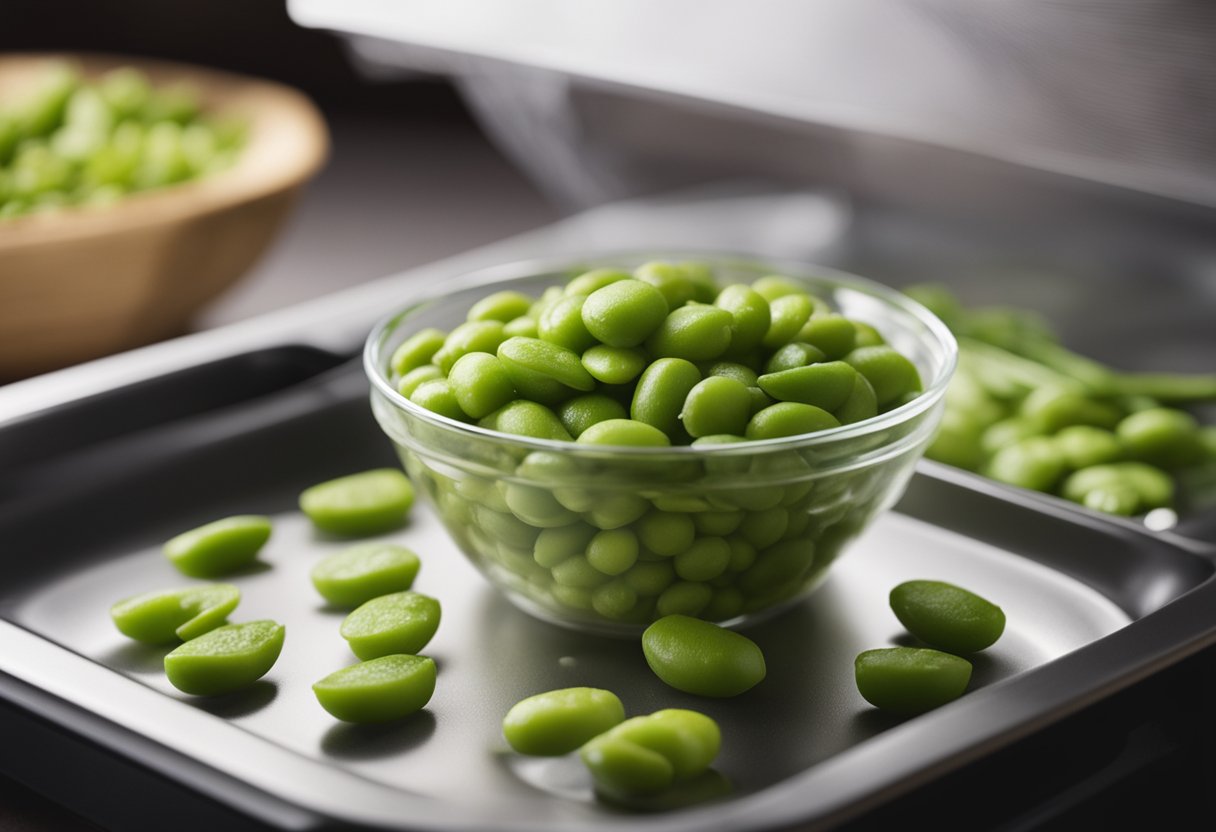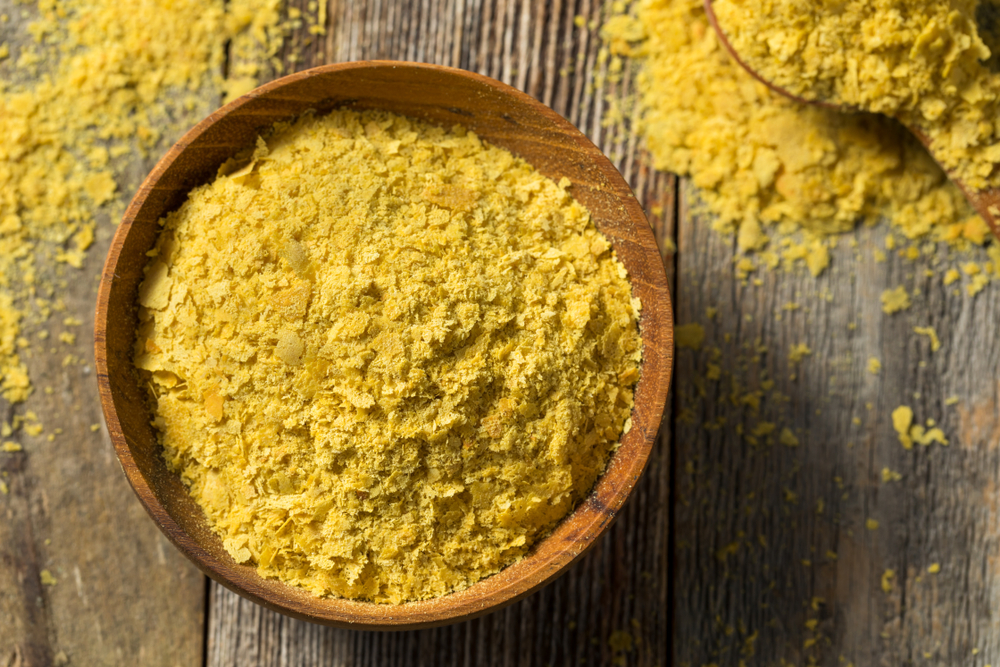Edamame is a popular and healthy snack that has become a staple in many households. It is a great source of protein and has a high nutritional value, making it an excellent choice for those looking for a healthy snack or appetizer.
However, if you have leftover edamame, you may be wondering how to reheat it properly without losing its flavor and texture. In this article, I will guide you through the best methods for reheating edamame so that you can enjoy it just as much as the first time.

Before reheating edamame, it is important to understand what it is and how to prepare it. Edamame is a young soybean that is harvested before the beans have had a chance to harden.
It is typically served in the pod and can be found fresh or frozen. To prepare edamame, simply boil the pods in salted water for 5-10 minutes, or until the beans are tender. Once cooked, drain the pods and serve them either hot or cold.
When it comes to reheating edamame, there are several methods you can try. The easiest and most popular way is to use a microwave.
However, other methods such as boiling, steaming, frying, roasting, and air-frying can also be used. Each method has its own advantages and disadvantages, so it is important to choose the one that works best for you.
Key Takeaways
- Edamame is a great source of protein and has a high nutritional value, making it an excellent choice for a healthy snack or appetizer.
- Before reheating edamame, it is important to understand what it is and how to prepare it.
- The most popular method for reheating edamame is using a microwave, but other methods such as boiling, steaming, frying, roasting, and air-frying can also be used.
Understanding Edamame

As someone who loves edamame, I know that it is a nutritious and delicious snack that can be enjoyed in many different ways.
Edamame is a type of soybean that is harvested when it is still young and green. It is a popular ingredient in many Asian dishes, and it is also commonly served as a snack in restaurants and bars.
Edamame can be purchased in several different forms, including fresh, frozen, shelled, and unshelled.
Fresh edamame pods can be found in the produce section of many grocery stores, while frozen shelled edamame is often found in the freezer section. Shelled edamame is also available canned or in vacuum-sealed packages.
When it comes to reheating edamame, the type of edamame you have will affect the best method to use. Fresh edamame pods can be boiled or steamed for a few minutes until they are heated through.
Frozen shelled edamame can be microwaved with a little bit of water for a quick and easy snack. Shelled edamame can be stir-fried or roasted for a delicious and crispy texture.
It is important to note that unshelled edamame should not be reheated in the microwave, as the shells can become tough and chewy. Instead, unshelled edamame should be boiled or steamed until the beans inside are heated through.
Overall, edamame is a versatile and nutritious snack that can be enjoyed in many different ways. By understanding the different forms of edamame and the best methods for reheating them, you can enjoy this tasty snack whenever you want.
Preparation Before Reheating

Before reheating edamame, it is important to properly prepare them to ensure that they are safe to eat and retain their texture and flavor.
Here are some tips on how to prepare edamame before reheating:
Cooked Edamame
If you have cooked edamame that you want to reheat, make sure that it has been stored properly. Cooked edamame should be stored in an airtight container in the refrigerator and consumed within 3-5 days.
If you plan on reheating cooked edamame, it is best to do so within 2-3 days of cooking it.
Cold Edamame
If your edamame is cold, let it come to room temperature before reheating. This will help ensure that the edamame heats evenly and does not become overcooked.
Frozen Edamame
If you have frozen edamame, it is best to defrost it before reheating. To defrost frozen edamame, place it in the refrigerator overnight or run it under cold water until it is thawed. Once thawed, pat it dry with a paper towel before reheating.
Room Temperature Edamame
If your edamame is at room temperature, it is best to consume it as soon as possible. If you need to reheat it, follow the instructions for reheating cooked edamame.
Refrigerated Edamame
If your edamame is in the refrigerator, make sure that it has been stored properly in an airtight container. Before reheating, let it come to room temperature to ensure that it heats evenly.
Leftover Edamame
If you have leftover edamame, make sure that it has been stored properly in an airtight container in the refrigerator. Before reheating, let it come to room temperature and follow the instructions for reheating cooked edamame.
By properly preparing your edamame before reheating, you can ensure that it is safe to eat and retains its texture and flavor.
Reheating Methods
When it comes to reheating edamame, there are a few methods you can use depending on your preference and the equipment you have available.
In this section, I will describe three popular methods for reheating edamame: the Microwave Method, Steaming Method, and Oven and Air Fryer Method.
Microwave Method
The Microwave Method is the quickest and easiest way to reheat edamame.
Here are the steps:
- Put the edamame (shelled or unshelled) in a microwave-safe bowl.
- Add one tablespoon of water for a full bowl of edamame and cover with a wet paper towel (or pierced plastic wrap).
- Microwave the edamame for 30-60 seconds, or 1-2 minutes from frozen.
- Let the edamame rest for 30 seconds.
- Season and enjoy.
Steaming Method
The Steaming Method is a great option if you want to avoid using the microwave.
Here’s how to do it:
- Fill a pot with enough water to cover the edamame.
- Bring the water to a boil.
- Add the edamame to a steamer basket and place it in the pot.
- Steam the edamame for 3-5 minutes or until it is heated through.
- Remove the pot from the heat and let the edamame cool for a few minutes before eating.
Oven and Air Fryer Method
If you want a crispy and flavorful way to reheat edamame, the Oven and Air Fryer Method is a great option. Here’s how to do it:
- Preheat your oven or air fryer to high heat.
- Spread the edamame on a baking sheet or in the air fryer basket.
- Roast the edamame for 10-15 minutes or until it is heated through.
- Remove from the oven or air fryer and season to taste.
Keep in mind that cooking time may vary depending on the amount of edamame you are reheating and the equipment you are using. Always make sure the edamame is heated through before consuming.
Seasoning and Serving

When it comes to seasoning and serving edamame, there are many options available. I personally prefer to keep it simple and just add a bit of salt to bring out the natural flavor of the beans.
However, if you want to add a bit more flavor, there are plenty of other options to consider.
One popular option is to add a splash of soy sauce to the edamame. This can give it a savory, umami flavor that pairs well with the beans’ natural sweetness.
You can also sprinkle some sesame seeds over the top for a bit of texture and nuttiness.
If you’re looking for a tasty snack, you can try charring the edamame slightly. To do this, you can toss the cooked beans in a bit of oil and then cook them in a hot skillet or on a grill for a few minutes until they start to char.
This can give them a smoky flavor that pairs well with the nuttiness of the sesame seeds.
No matter how you choose to season your edamame, it’s important to make sure that it’s fully cooked before serving.
You don’t want to risk eating undercooked beans, as this can be dangerous for your health. However, you also don’t want to overcook the beans and make them mushy.
Aim for a texture that is al dente, meaning that they are fully cooked but still have a bit of bite to them.
Overall, seasoning and serving edamame is a simple and delicious process that can be customized to your tastes. Whether you prefer a bit of salt or a more complex flavor profile, there are plenty of options to choose from.
Incorporating Edamame into Meals

As a versatile and nutritious ingredient, edamame can be incorporated into various meals to add flavor and health benefits.
Here are some ways I like to use edamame in my meals:
Soups
Edamame can be a great addition to soups, adding texture and protein. I like to add cooked edamame to vegetable soups or miso soup for a boost of nutrition. To cook edamame for soup, simply boil them in salted water for 3-5 minutes until tender.
Rice Bowl
Edamame can be a tasty addition to rice bowls, adding a pop of color and protein. I like to mix cooked edamame with brown rice, roasted vegetables, and a flavorful sauce for a filling and nutritious meal.
Health Benefits
Edamame is a great source of protein, fiber, and iron. It also contains antioxidants and may have cancer-fighting properties. Incorporating edamame into your meals can help boost your overall health and nutrition.
How to Cook Edamame
To cook edamame, simply boil them in salted water for 3-5 minutes until tender. You can also steam them or microwave them for a quick and easy snack. Be sure to season with salt or other spices for added flavor.
Cooking Tip
When cooking edamame, be sure to not overcook them as they can become mushy. It’s best to cook them until they are just tender.
Iron
Edamame is a great source of iron, which is important for maintaining healthy blood cells. Incorporating edamame into your meals can help boost your iron intake.
Cancer
Edamame contains compounds that may have cancer-fighting properties. While more research is needed, incorporating edamame into your meals can be a tasty way to potentially boost your health.
Frequently Asked Questions

What are some ways to reheat edamame?
There are several ways to reheat edamame, including microwaving, boiling, air frying, and pan frying. Each method has its own advantages and disadvantages, so it’s important to choose the one that works best for you.
Is it safe to reheat edamame?
Yes, it is safe to reheat edamame as long as it has been stored properly and reheated to the appropriate temperature. It’s important to make sure that the edamame is heated all the way through before eating it.
Can you eat leftover edamame cold?
Yes, you can eat leftover edamame cold, but it may not be as enjoyable as when it’s warm. If you’re planning to eat leftover edamame cold, make sure to store it in an airtight container in the refrigerator to keep it fresh.
How do you reheat edamame in the microwave?
To reheat edamame in the microwave, place the edamame in a microwave-safe dish and add a tablespoon of water.
Cover the dish with a damp paper towel and microwave on high for 30-60 seconds, or 1-2 minutes for frozen beans. Make sure to stir the edamame halfway through the cooking time to ensure that it heats evenly.
Can you reheat edamame in an air fryer?
Yes, you can reheat edamame in an air fryer. To do so, preheat the air fryer to 350°F and place the edamame in the basket. Cook for 5-7 minutes, shaking the basket every few minutes to ensure that the edamame heats evenly.
What are some edamame recipes to try?
There are many delicious edamame recipes to try, including edamame hummus, edamame salad, and edamame stir-fry. Experiment with different flavors and ingredients to find the recipe that works best for you.







